Xbox One X Review
Xbox One X Review
The ultimate games console comes at a cost
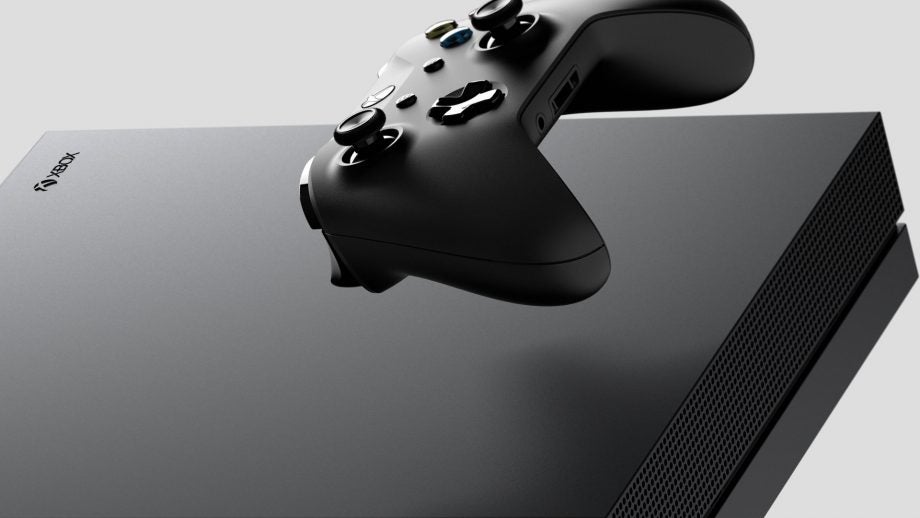
Verdict
Even with the arrival of next-gen consoles, the Xbox One X remains an incredibly powerful machine that many will adore.
Pros
- Gorgeous 4K visuals
- Quiet running
- Improves performance in some games
Cons
- Quality of graphics enhancements vary by game
- Small and slow hard disk
- Relatively high price
Key Specifications
- Review Price: £450
- Xbox One ecosystem
- Native 4K gaming and HDR
- Dolby Atmos support
- 4k Blu-ray drive
- 3x USB ports, 1x gigabit Ethernet, 1x HDMI 2.0 out, 1x HDMI 1.4b in, optical audio
PS5 and Xbox Series X are now out in the wild, but the Xbox One X remains one of the most powerful gaming consoles you can buy right now. It represents a major performance boost over the likes of PS4 and Xbox One S – providing players with greater resolution, improved performance and other bonuses.
4K is the name of the game, and this machine does a sterling job of serving up games at the fabled 3840 x 2160-pixel resolution, although often falls beneath the highest benchmarks expected from such a resolution. Still, the results are oftentimes remarkable.
But it’s not quite that simple. While the number of Xbox One X games is increasing by the day, there are still many which won’t offer bespoke advantages on the new hardware. In addition, not every game you played on the original Xbox One or Xbox One S will look better, or even play better, on the One X; it’s entirely on a game-by-game basis.
Aside from muddying the waters, there’s no disputing that the Xbox One X is a seriously impressive piece of hardware that took console performance to new heights, and still worth a glimpse many years after release.
Xbox One X – Design and connectivity
- A 4K console that sits alongside the Xbox One S, PS4 and PS4 Pro
- Capable of running a selection of games at higher performance/resolution
- Outfitted with a 4K blu-ray player and a slimmer, more stylish design
The One X is a nice, but not lovely, piece of kit. Smaller in (almost) every way than the Xbox One S, it’s practically pint-sized compared to the first version launched in 2013. However, don’t imagine it’ll slot into your media centre like a normal Xbox – instead of an exhaust fan on the top, there’s now a wide exhaust at the rear of the console.
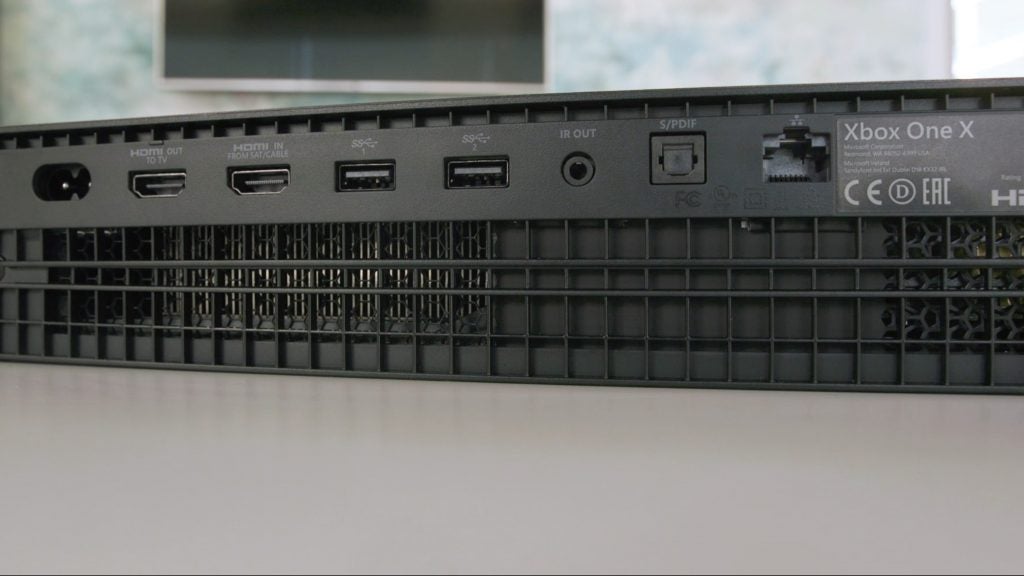
This is great for those who want to stack other AV kit on top of the Xbox One X, but it does mean you’ll want to give a bit more room around back to accommodate the new cooling system.
In terms of ports, the setup is exactly the same as the Xbox One S, with most sitting around the back. Easy peasy. In fact, the only thing that’s changed is the placement of the IR receiver and front-facing USB port, which have swapped sides. There’s Wi-Fi, as always, along with a wireless receiver for controllers as well as a 4K Blu-ray player that functions identically to the one in the S.
In terms of build, it’s standard Xbox fare, with a matte black plastic housing. Even after a week of abuse (dropping controllers and power adapters onto it and constant HDMI cable swaps and power cable pulls) it looks as pristine as the day it arrived. I personally prefer the white Xbox One S, but each to their own.
In the box you get the figure-eight power adapter, a HDMI 2.0-certified cable and a standard Xbox One controller with non-rechargeable AAA batteries.
Xbox One X – Specs and technology
- In terms of raw power, it eclipses the Xbox One S and PS4 Pro
- Can also output HDR and increased performance on the majority of games
- Storage size is 1TB as standard, but can be upgraded with external drives
Yes, I know you want to find out how this console plays and what the games look like. But in order to understand what the One X is capable of, we need to understand what’s under the bonnet. I’ll keep it brief, I promise. But if you must skip ahead, head to page two of this review where I’ll dive headlong into graphics analysis.
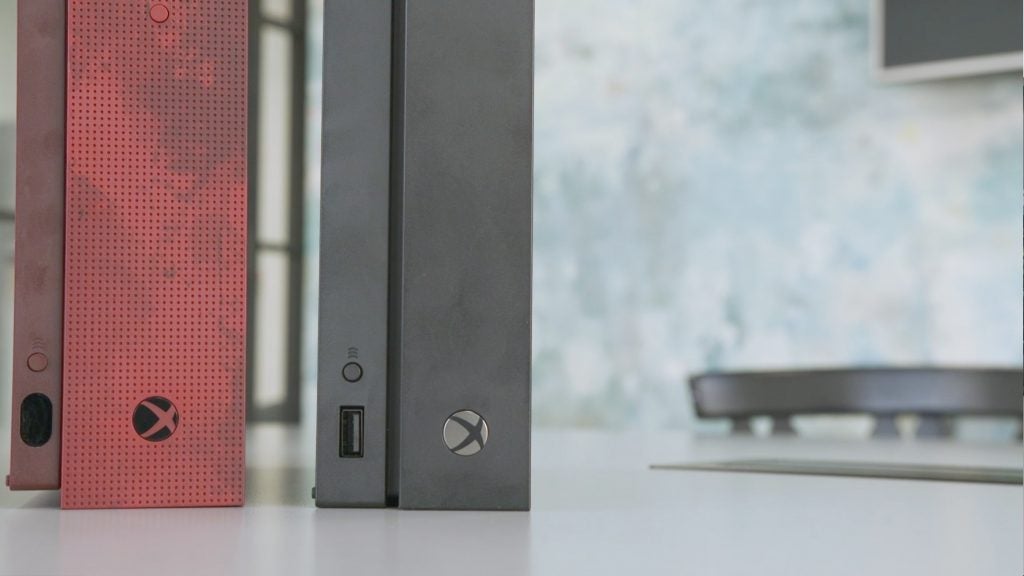
There are a fair few elements that contribute to the One X’s improved performance and graphical prowess. The first is simple, and that’s fidelity. Previous Xbox consoles have produced Full HD (1920 x 1080-pixel) images, with the Xbox One S using a technique called ‘upscaling’ to output 4K Ultra HD (3840 x 2160-pixel) resolution.
The One X is different. Instead, it produces Ultra HD images from the off. This means the graphics hardware (GPU) has to work four times as hard to produce each frame – something it has to do up to 60 times every second to keep up with a TV. The expected result? A much, much sharper image that makes proper use of all those pixels in your fancy 4K TV.
That’d be impressive enough, but in order to make those super-sharp images look the bee’s knees, the Xbox has to work even harder. It’s no use having a super-sharp image if it looks a bit naff elsewhere. That’s where the second upgrade comes in, and that’s what I like to call graphical eye-candy. Eye-candy is the sort of stuff you’ll notice when playing an immersive story-driven game like Gears of War 4 or Rise of the Tomb Raider. You’ll see light rays filtering through trees, shadows that more accurately reflect what’s going on in the world, higher-quality reflections, the ability to see further and in more detail, and much more.
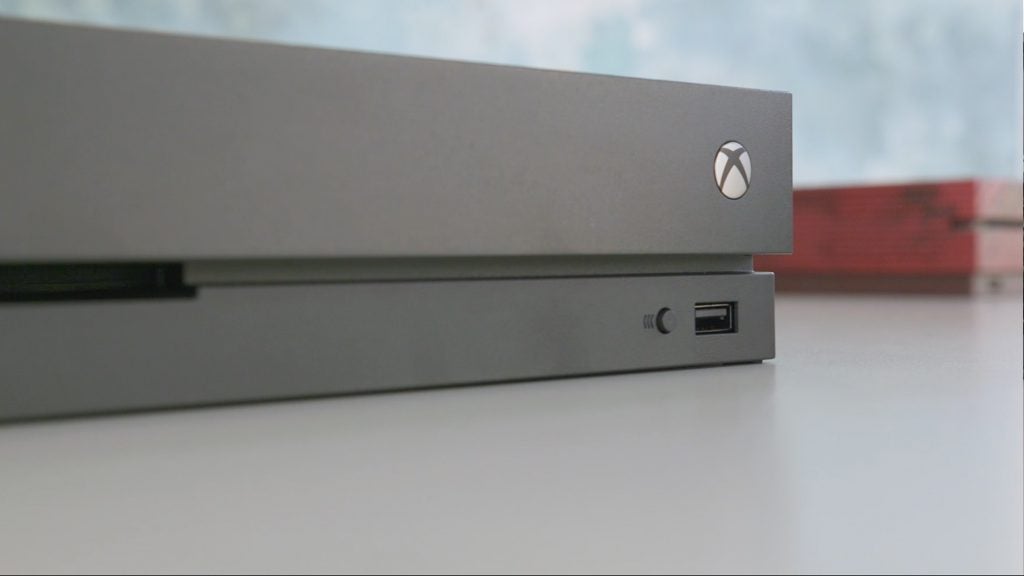
Some games will even support wide colour gamut HDR, which means you’ll see more and brighter colours than ever before. Some games on the Xbox One S already supported this, but in conjunction with Ultra HD and the other graphical enhancements, it should look more spectacular here than ever before.
But it’s not as simple as firing up your favourite game and enjoying the new graphics. Each developer for every game has to go out of its way to update a game in order for it to take advantage of the One X’s new hardware. Look out for the ‘One X Enhanced’ label on game marketing to see whether the title you’re most excited about will look any better.
All of this is possible because the One X is, according to Microsoft, almost four times more powerful than the Xbox One S. There’s an eight-core AMD processor running at 2.3GHz, and a much-improved AMD graphics chip with 40 Compute Units (versus 12 on the older models). There’s 12GB of high-speed memory for the console to use, with around 9GB set aside for games and graphics. The whole lot is cooled by a vapour chamber that channels heat to the rear of the console via a state-changing liquid/gas copper heat pipe, to be deposited in a heatsink and cooled by fans. This is why the One X is able to be so powerful, yet so small. That, and a load of electrical wizardry that makes each individual component substantially more efficient. This is a little box of big tricks.

Speaking of little boxes, the 1TB hard disk is laughably small in an age where 4K games weigh in at over 100GB. You’re going to want to invest in an external USB hard disk if you don’t want to have to keep deleting games to make space for others. Fortunately, Xbox One consoles do at least let you run games from an external disk, so you don’t have to worry about moving them back and forth.
Now, let’s take a look at the performance of the machine.
Xbox One X – Graphics and performance
- Games will require a bespoke update to take advantage of the console
- Resolution and performance are improved in the majority of games
- You will need a 4K display to make the most of the console
At this point it’s worth remembering that there will be no Xbox One X exclusives. Xbox One is a platform, and the consoles are merely different ways to enjoy the platform.
I did all my testing on Samsung’s 49-inch KS7000 TV. This set supports full 4K pictures and HDR, making it an ideal choice for this test. It also happens to be Trusted’s TV of the Year 2016.
The following screenshots were all captured on the Blackmagic Decklink 4K Extreme, a capture card that supports up to 60fps uncompressed 4K footage over HDMI 2.0. The only thing you won’t see is HDR.
The first game we tested was Gears of War 4. Given it’s a Microsoft exclusive, you won’t be surprised that it’s probably the best example of what the console is capable of. That is to say, it’s gorgeous. The huge range of colours now available to the devs shines through, giving scenes more depth than anybody’s ever seen from a console game. The way light falls from both artificial light sources and the sun looks accurate and natural, and while many of these eye-candy features fade into the background when you’re hurling frag grenades at massive underground-dwelling insects, it’s undeniably beautiful. Even when playing at Full HD resolution you can’t fail to spot the extra details.
And yes, even if you only have a Full HD television, you’ll still benefit from the extra power: the console will “super-sample” your games, meaning it’ll render them in Ultra HD and then scale it down to Full HD for extra sharpness.
Like Rise of the Tomb Raider and Shadow of War, Gears allows players to choose how to utilise the power of the One X. If you prefer, you can enabled Performance mode, which dials down the resolution while keeping all the graphical prettiness and bumping up the game’s frame rate from 30fps to 60fps.
That’s a massive leap, and both I and several other members of the Trusted Reviews team would take extra performance over higher resolution any day of the week, especially in a game like Gears of War. It’s a great compromise, that lets you get the lovely light rays and whatnot alongside a game that feels far more fluid and responsive. You lose a little sharpness, but not as much as you might think. For me, it’s worth it.
Gears of War Graphics and Performance Examples

Gears of War, Xbox One X: This cropped image in Visuals graphics mode shows dynamic lighting to its best effect. This scene in HDR is stunning

The same scene but in Performance mode. You lose some sharpness but gain twice the framerate, and keep the same lovely lighting and textures

That same scene again on the One S. There’s a lack of sharpness and the colours are quite clearly more muted. Not exactly ugly, though.

Xbox One X cropped image: Note the sharpness of the character model and the detail on the ground textures

On the One S, details are again a bit more hazy, as are a few textures. But the difference is far less stark than in the first image comparison and would be hard to tell at a glance.
FIFA 18 has also been updated, but it doesn’t affect the game nearly as much as Gears. The only difference I could spot was a bucketload of extra sharpness around players on the pitch, which isn’t to be sniffed at. It’s easiest to see when the ball is in play, which is where people spend most of their time anyway. Everywhere else, like in replays and player close-ups, it’s less obvious.
But it wasn’t like FIFA 18 needed many enhancements anyway; simply lifting the game into Ultra HD makes more difference than anything else could, and it looks great.
FIFA 18 Graphics and Performance Examples

Facial hair is sharper on the X (below) but other facial details are largely the same as the S (above)

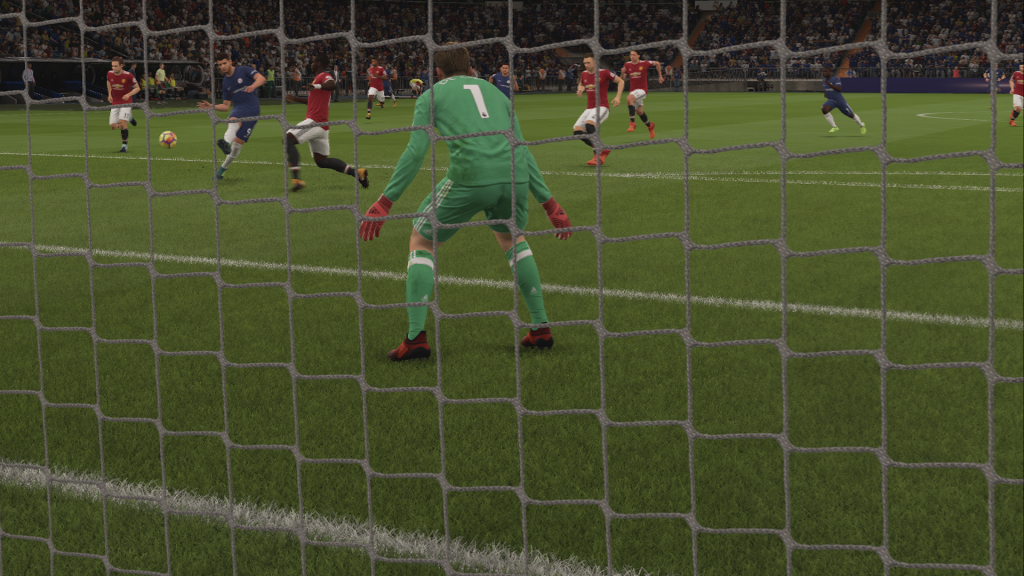
FIFA’s extra fidelity isn’t obvious beyond some sharper player models and more detailed grass. Here, the net is also a bit sharper.
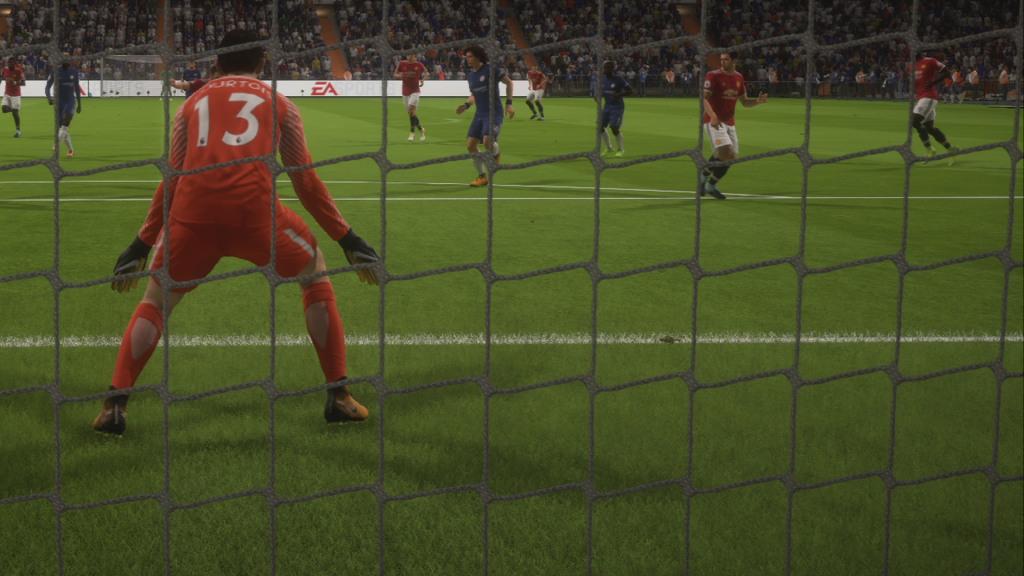
Meanwhile on the S, it’s hardly ugly, but the grass is softer.
My final experience came from Titanfall 2, a game that runs at 60fps on the Xbox One S. It definitely looks sharper thanks to Ultra HD, but most of the graphical enhancements are much more subtle. Slightly better lighting effects, some better-quality explosions and higher-resolution gun models was about all I could spot.
But there were some points at which the One X looked no better than the One S when playing Titanfall. These were the busiest parts of the game, where loads of action was happening on screen; the One X was likely using what’s called “dynamic scaling” to temporarily reduce resolution to keep performance silky-smooth. The very fact it’s able to output 60fps at close to Ultra HD is impressive, but it’s not a life-changer.
It’s this dynamic scaling that’s really what sets the One X apart – because of its massive horsepower, it can practically guarantee consistent frame rates on any game currently on the market.
Titanfall 2 Graphics and Performance Examples

Titanfall 2: Textures are sharper here, and you can see there’s better flare coming from the titan’s red lights. The lighting overall is of a higher quality, although the colour of the scene is the same as the One S (below)

You should buy the Xbox One X if…
- You want plenty of power, but without a next-gen upgrade: Microsoft remains committed to all platforms under the Xbox banner for the forseeable future, meaning Xbox One X owners will be able to immerse themselves in the latest games without worry. This will come with visual and performance compromises, but those who don’t mind such a hit will adore this console.
- Xbox Game Pass looks appealing to you: One of the biggest draws of Microsoft’s gaming side right now is Xbox Game Pass. All of its major exclusives arrive on the service at launch with no extra cost involved, meaning you can play an endless array of blockbusters and indie gems with a single monthly investment. It’s only growing more ambitious, so why not dive in.
- You want to experience 4K games and films: Fitted with a 4K blu-ray player, the Xbox One X is capable of playing 4K films while also depicting a number of fantastic games at a much higher resolution. It won’t reach the ambition of its next-gen siblings, but it’s pretty damn close.
You should not buy the Xbox One X if…
- You want the most powerful console out there: The Xbox Series X is the Microsoft console to buy if you want the most powerful gaming experience out there right now. It’s capable of higher performance, greater resolution and is simply much faster and more intuitive. However, such a decision is more expensive, and stock of the product is very hard to come by right now.


